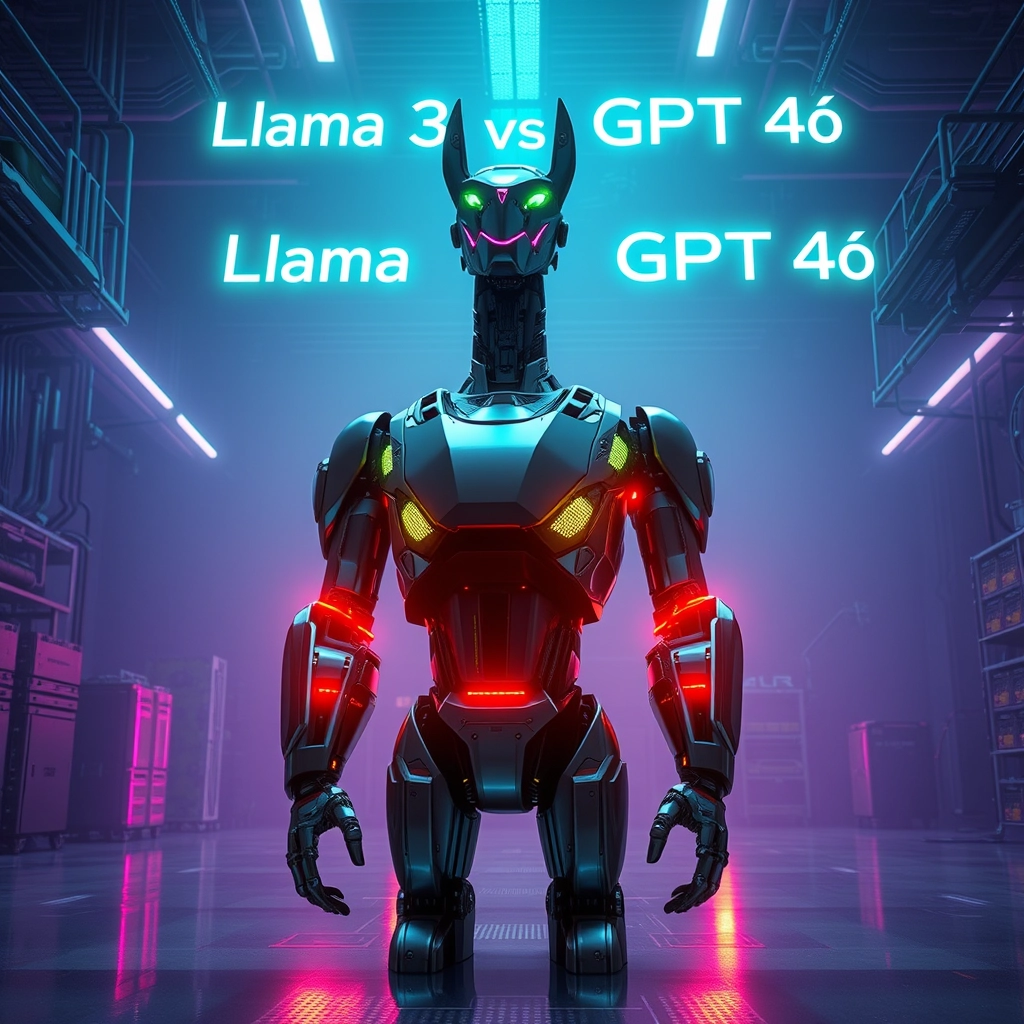As of September 2024, both Llama 3 and GPT-4o have seen significant developments in their performance and capabilities. This article will provide a detailed comparison based on the latest available information, focusing on aspects such as programming performance, cost efficiency, and task-specific strengths.
1. Programming Performance: Llama 3 vs GPT-4o
Llama 3 in Coding Tasks
In July 2024, user reports indicated that Llama 3.1 (an updated version of Llama 3) excelled in coding and programming tasks. Some users found Llama 3.1 to be more accurate and responsive than GPT-4 in specific scenarios, particularly in programming-related queries. However, these observations are based on user experience and may not represent a complete evaluation of the two models.
GPT-4o's Versatility
GPT-4o, a multimodal model by OpenAI, continues to perform well across various domains, including coding. However, when comparing raw programming performance, Llama 3.1 has been noted to occasionally outperform GPT-4o in speed and accuracy during coding tasks, especially when dealing with simple scripts and functions.
2. Overall Comparison: Llama 3 vs GPT-4o
Performance and Capabilities
As of June 2024, detailed comparisons between Llama 3, GPT-4, and GPT-4o emerged, showing that both models are strong contenders in various fields. Llama 3 is recognized for its language understanding, conversation generation, and translation tasks, whereas GPT-4o shines in complex reasoning and multimodal interactions, handling text, images, audio, and even video.
Although exact benchmark details are limited, these models are often regarded as comparable in performance for many tasks, though they each have distinct strengths depending on the specific use case.
Task-Specific Strengths
Llama 3, particularly in its 70 billion parameter variant, excels in handling language-based tasks such as GSM8K and Hellaswag, occasionally surpassing GPT-4o in these domains. In contrast, GPT-4o, designed for advanced multimodal applications, demonstrates an edge in tasks requiring complex reasoning and multimodal inputs.
3. Cost, Speed, and Task Performance
Cost Efficiency: Llama 3 vs GPT-4o
Llama 3 offers significant cost advantages, especially for developers and enterprises on a budget. As an open-source model, Llama 3 is reported to be 50 times cheaper than GPT-4 in certain scenarios. Additionally, Llama 3's 70 billion parameter version is estimated to run 10 times faster in cloud environments compared to GPT-4o, making it highly attractive for use cases requiring high throughput and low latency.
In contrast, GPT-4o comes with a higher price tag. As of mid-2024, the token usage fees for GPT-4o are approximately $30 per million input tokens and $60 per million output tokens, which are considerably higher than Llama 3’s usage costs.
Task Performance Breakdown
- Llama 3: Best suited for education tools, virtual assistants, and applications requiring efficient text processing. Its open-source nature allows for customizations tailored to specific needs.
- GPT-4o: Ideal for applications needing complex reasoning, multimodal interaction, or real-time voice conversations. Its strength lies in handling more complex tasks, especially when the input includes images or videos.
4. Open Source vs Proprietary Models
The debate over whether open-source models like Llama 3 can match or exceed the performance of proprietary models like GPT-4o continues. As of early 2024, companies like Meta (creators of Llama) and Mistral have promised to deliver models that could potentially rival GPT-4o's capabilities. However, the timeline for these advancements remains uncertain, with some experts doubting whether they will reach GPT-4o’s level by the end of the year.
5. Recommended Product: Chat o1
If you're looking to leverage the power of GPT-4o in a practical and user-friendly way, we recommend Chat o1, an AI chatbot tool built on GPT-4o's advanced capabilities. Chat o1 provides an intuitive interface and allows users to experience GPT-4o's multimodal functionality firsthand.
Key Features of Chat o1:
- Multimodal Input: Handles text, images, and even audio inputs, making it versatile for a wide range of applications.
- Free Trial Available: You can try Chat o1 for free, making it an excellent option for businesses and individuals interested in exploring the potential of GPT-4o.
- Advanced AI Capabilities: With GPT-4o's ability to process complex tasks and maintain contextual understanding, Chat o1 offers superior conversational experiences.
Whether you're building a customer support chatbot, virtual assistant, or just looking for a tool that can handle advanced AI tasks, Chat o1 is a highly recommended solution.
Conclusion: Llama 3 or GPT-4o?
The choice between Llama 3 and GPT-4o ultimately depends on your specific needs. If budget constraints and text processing efficiency are your primary concerns, Llama 3 is an excellent option. On the other hand, if your focus is on complex tasks, multimodal input, and you have the budget for it, GPT-4o might be a better fit.
Regardless of your choice, it's important to stay updated on the latest model benchmarks and performance tests, as both Llama 3 and GPT-4o are continuously evolving.
